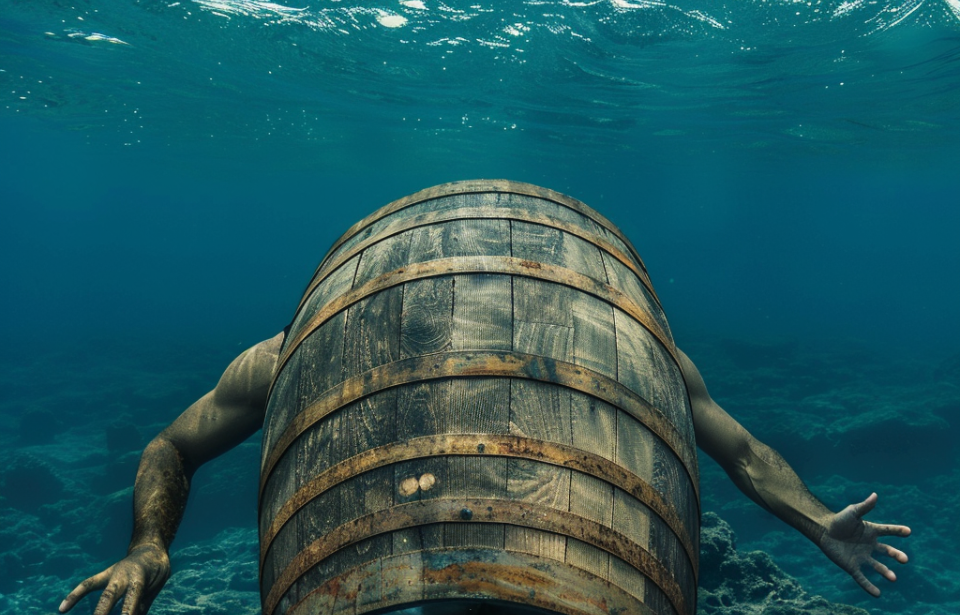Diving into the depths of history, we uncover the remarkable contributions of John Lethbridge, a figure whose ingenuity laid the groundwork for modern underwater exploration. Born in the early 18th century, Lethbridge’s curiosity and inventive spirit drove him to design a device that would forever change the way humanity interacted with the ocean’s mysteries. Living in an era when the ocean floor was as unreachable as the moon, Lethbridge’s vision was nothing short of revolutionary. His invention, a barrel-like diving machine, enabled him to recover treasures and artifacts from shipwrecks, providing a glimpse into submerged worlds that had remained untouched for centuries.
The origins of John Lethbridge’s innovative spirit
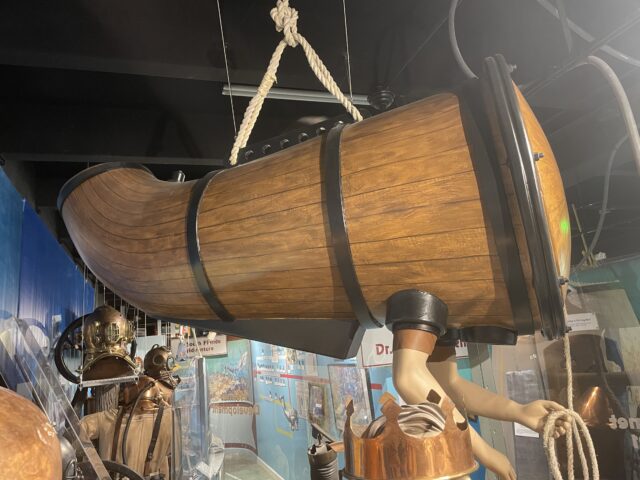
John Lethbridge’s journey to becoming a pioneer in underwater recovery began with a simple yet profound realization: the depths of the ocean were not just final resting places for sunken treasures but realms that, with the right innovation, could be explored and reclaimed. Born into a family of inventors and thinkers, Lethbridge was surrounded by an environment that nurtured curiosity and encouraged the pursuit of solving complex problems. This background laid the foundation for his inventive spirit, driving him to look beyond the limitations of his time and imagine possibilities that others hadn’t dared to dream of.
The creation of Lethbridge’s groundbreaking device was not an overnight success but the result of years of experimentation, failure, and resilience. He observed the challenges faced by divers of his era, who were severely restricted by the lack of suitable equipment to stay underwater for extended periods. Determined to change this, Lethbridge applied his knowledge and skills to design a device that would not only allow for longer dives but also enable the recovery of items from shipwrecks that were thought to be lost forever. His invention marked a significant leap forward in underwater exploration, setting the stage for future advancements in the field and solidifying his legacy as an innovator who turned the impossible into reality.
The invention of one of the earliest diving machines
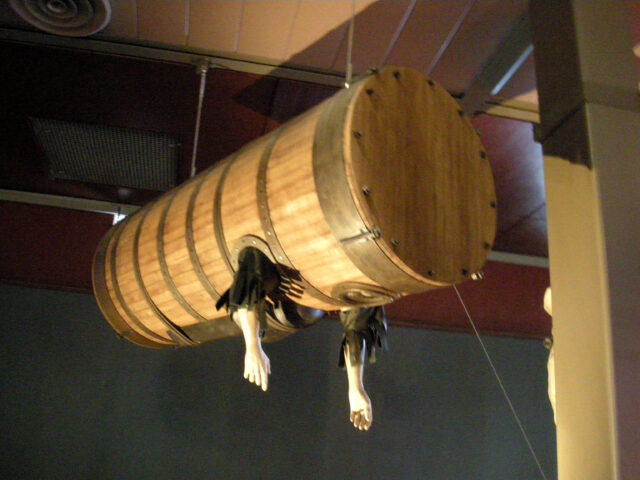
In the early 18th century, the realm of underwater exploration was about to witness a remarkable innovation thanks to the ingenuity of John Lethbridge. This inventor, a man of keen interest in the mysteries lying beneath the ocean’s surface, conceptualized and built a pioneering device that would significantly advance the capabilities of underwater retrieval and exploration. His creation, a barrel-shaped diving machine, was designed for the purpose of salvaging valuable items from shipwrecks, a common and perilous challenge of the time. Constructed from wood and bound with strong hoops, the apparatus featured a leather sleeve and a glass viewing port, allowing the operator inside to see while remaining relatively dry and safe.
The operational principle of John Lethbridge’s diving machine was straightforward yet ingenious. The diver, positioned within this early submarine, would be submerged to the depths with the aid of weights. Once at the desired depth, they could use the viewing port to locate objects of interest. Air was supplied from the surface through a series of tubes, enabling the occupant to remain submerged for extended periods. This innovative approach not only increased the safety of underwater salvage operations but also marked a significant step forward in the human endeavor to explore and interact with the underwater world. The success and functionality of Lethbridge’s machine underscored the potential of human ingenuity in overcoming the challenges posed by the sea, setting the stage for future advancements in diving technology.
Notable ventures and recoveries using John’s diving machine
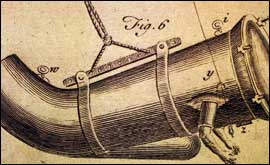
John Lethbridge, a pioneering figure in the field of underwater exploration, made significant contributions to the retrieval of sunken treasures and artifacts with his innovative diving machine. His creation, a barrel-like apparatus, enabled divers to remain submerged longer than ever before, opening the door to recovering items thought to be lost to the depths. Among his notable contributions, the assistance with the retrieval of valuable cargo from the wreck of the East Indiaman “Vansittart,” which sank in 1719, stands out. Lethbridge’s machine allowed him to salvage a substantial amount of gold and silver from the ocean floor, demonstrating the potential of his invention for maritime salvage operations.
Lethbridge’s notable recoveries include an array of valuable items from sunken vessels, such as precious metals and exotic goods, which contributed significantly to the wealth of his patrons. His success in retrieving these treasures from the ocean floor underscored the potential of underwater salvage operations. Moreover, his contributions went beyond financial gains; they enriched our understanding of underwater exploration and recovery techniques. Through his daring and ingenuity, John Lethbridge opened up new horizons in the search for lost treasures beneath the sea, leaving a legacy that would inspire generations of explorers and adventurers.
The legacy of John Lethbridge in modern diving technology
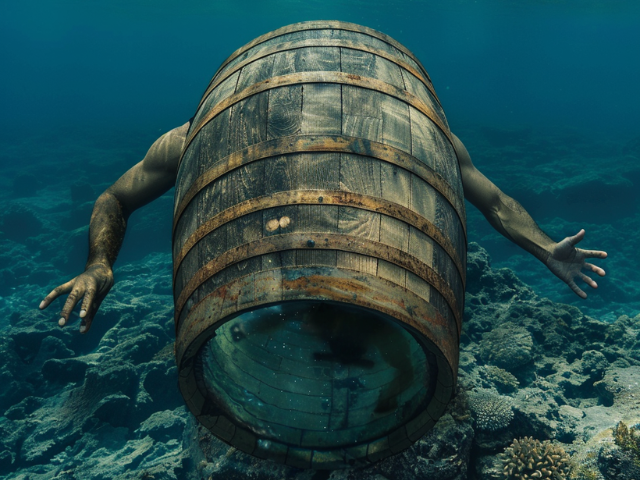
The legacy of John Lethbridge in the realm of underwater exploration cannot be understated. His innovative design, a barrel-like diving machine created in the early 18th century, revolutionized the way humans could interact with the underwater world. This contraption allowed divers to remain submerged longer than ever before, opening new avenues for salvage operations, underwater research, and exploration. The ingenuity behind Lethbridge’s creation laid the groundwork for the development of modern diving technology. By providing a means to breathe underwater, albeit in a rudimentary form, he paved the way for future advancements that would allow for even deeper and longer underwater excursions.
The legacy of his invention is evident in the evolution of diving technology. By addressing the fundamental need for breathable air underwater, Lethbridge laid the groundwork for future advancements. His approach inspired subsequent innovations, leading to the development of diving bells, and eventually, modern scuba equipment. The principles he introduced have been refined over the centuries, culminating in the sophisticated gear that enables today’s divers to explore the depths with greater safety and for longer durations. The pioneering spirit of John Lethbridge lives on, as his initial foray into underwater exploration continues to influence the design and functionality of contemporary diving apparatus, pushing the boundaries of what is possible beneath the waves.
Read more: Expedition Planned to 300-Year-Old Shipwreck Carrying $20 Billion In Gold and Emeralds
The legacy of John Lethbridge extends beyond the physical boundaries of his invention, inspiring a generation of explorers and scientists to push the limits of what is known about our oceans. His pioneering spirit is a beacon for those who seek to uncover the mysteries lying beneath the waves, driving advancements in technology and methodology that continue to revolutionize the field of marine exploration. As we stand on the shoulders of giants, Lethbridge’s contributions remind us of the power of human curiosity and the endless possibilities that await when we dare to explore the unknown.
